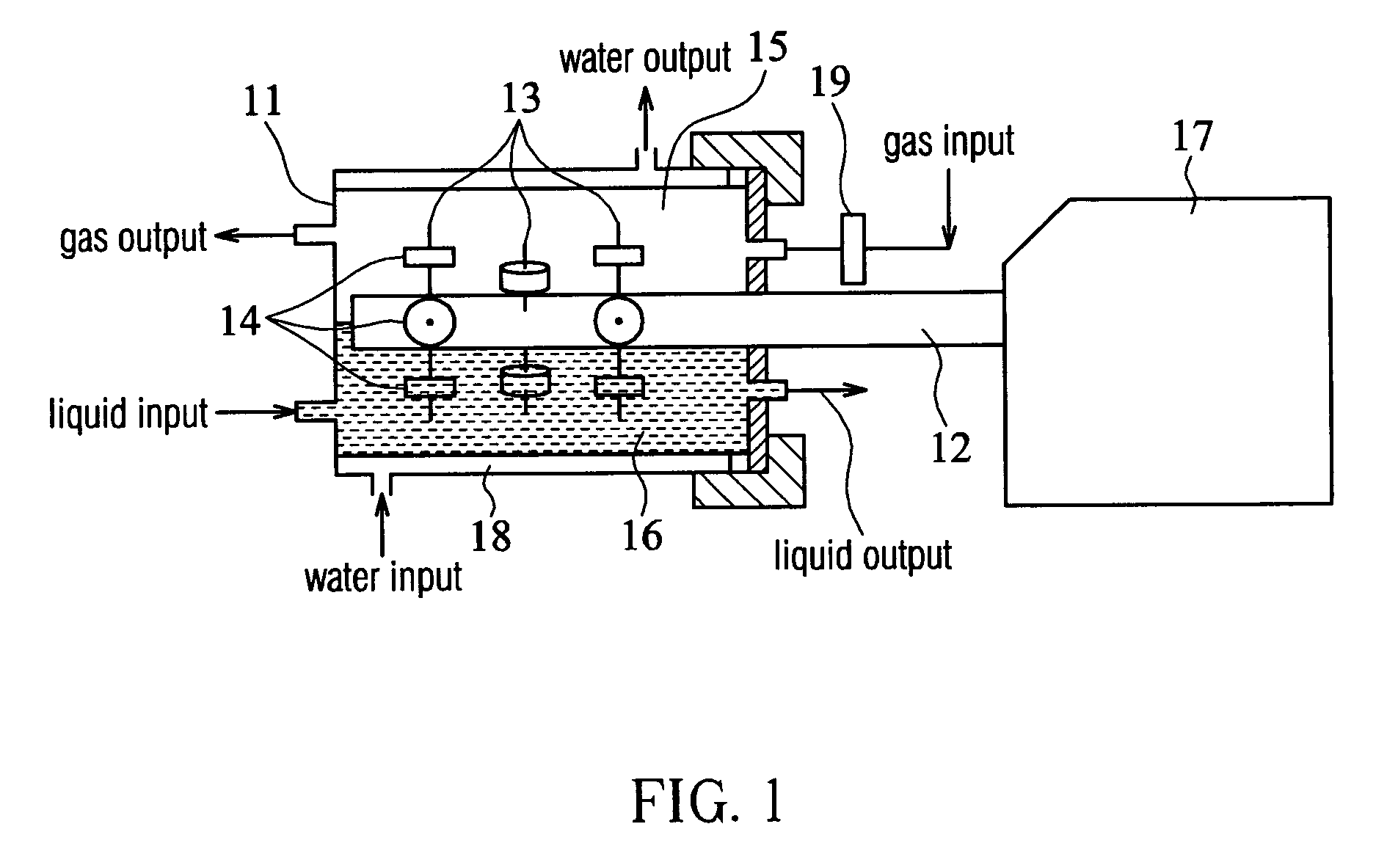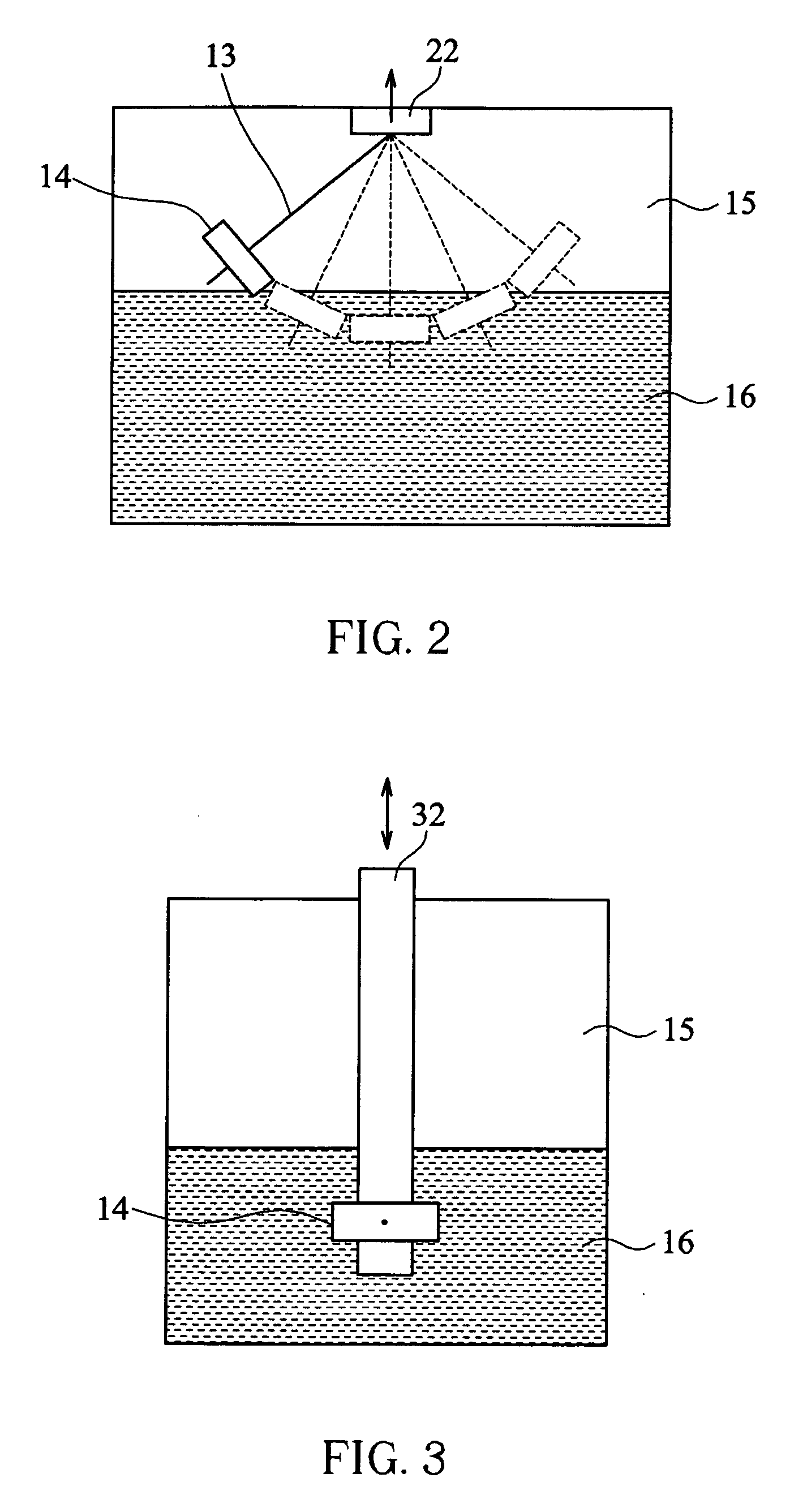Bioreactor for cultivating tissue cells
- Summary
- Abstract
- Description
- Claims
- Application Information
AI Technical Summary
Benefits of technology
Problems solved by technology
Method used
Image
Examples
example
[0028] In the following example, the bioreactor in the first embodiment was used to cultivate chondrocytes for demonstrating the effects of the bioreactors disclosed by the invention. Besides, it should be noted that the materials, operation conditions, and analytical methods etc. have been specifically described in the Applicants' article, “A Novel Rotating-Shaft Bioreactor for Two-Phase Cultivation of Tissue-Engineered Cartilage”, Biotechnol. Prog., 2004, Vol. 20, 1802-1809, which is incorporated by reference in their entirety.
[0029] At first, chondrocytes, isolated from the articular cartilages of 7-day-old Wister rats, were seeded onto porous poly(L-lactide-co-glycolide) (PLGA) scaffolds (the substrates) in spinner flasks for three days (seeding density: 3×106 cells / scaffold). Then, the chondrocyte / scaffold constructs were transferred into the bioreactor shown in FIG. 1 and fixed to the rotatable shaft 12 by being threaded and positioned on the stainless steel needles 13. Appro...
PUM
 Login to View More
Login to View More Abstract
Description
Claims
Application Information
 Login to View More
Login to View More - R&D
- Intellectual Property
- Life Sciences
- Materials
- Tech Scout
- Unparalleled Data Quality
- Higher Quality Content
- 60% Fewer Hallucinations
Browse by: Latest US Patents, China's latest patents, Technical Efficacy Thesaurus, Application Domain, Technology Topic, Popular Technical Reports.
© 2025 PatSnap. All rights reserved.Legal|Privacy policy|Modern Slavery Act Transparency Statement|Sitemap|About US| Contact US: help@patsnap.com



